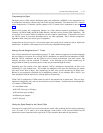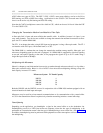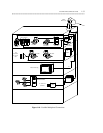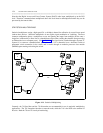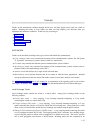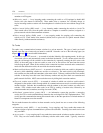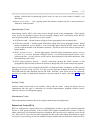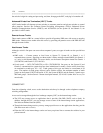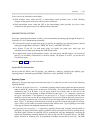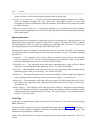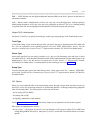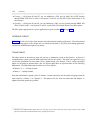TRUNKING 1-39
_ ______________________________________________________________________________________
_ ______________________________________________________________________________________
_ ______________________________________________________________________________________
Access can also be switched or nonswitched.
• With switched access, either the LEC or interexchange carrier provides access to their switching
complex for the special services for which you have contracted.
• With nonswitched access, either the LEC or the interexchange carrier provides you with a direct
connection to the special services for which you have contracted.
ADMINISTRATION OPTIONS
For proper communication between switches, you must administer the trunk group through the System 75,
System 85, G1, or G2 administration procedures.
• For System 85 and G2, for each trunk group you specify the signaling type, signaling protocol, and the
trunk type through PROC 100 Word 1, PROC 101 Word 1, and PROC 103 Word 3.
• For System 75 and G1, for each trunk group you specify the group type, trunk type, and
communications (Comm) type through the Trunk Group screen.
• For digital trunks on all communications systems, you must specify the DS1 options. On System 85
and G2, you use PROCs 260 and 263 to set these options. On System 75 and G2, you use the DS1
Circuit Pack screen.
See tables 1-10 to 1-13 for specific field entries.
System 85/G2 Administration
On the System 85 (R2V4) and G2 switches, you administer a trunk by specifying the signaling type,
signaling protocol, and trunk type with PROC 100 Words 1 and 3 and PROC 101 Word 1.
Signaling Types
Supervisory messages that request and return the status of a trunk call are sent via one of the following
signaling methods:
• E & M (ear & mouth) supervision — A symmetric signaling scheme used on public and private network
trunks in which DC voltage levels are sent over E & M leads. The E & M leads are separate from the
transmission path (T & R leads). E & M signals indicate on-off hook states of each end of the
connection path. E & M signaling is further divided into types (type I – V). DIMENSION systems use
only type I and System 75 and System 85 can use type I or V. Type I is signaling from the trunk
interface to the far-end over the M lead using nominal −48 volts for off-hook and local ground for on-
hook. Signaling from the far-end is over the E lead using far-end ground for off-hook and open for on-
hook. Type V is signaling in both directions by means of open for on-hook and ground for off-hook.
Type V allows you to connect two trunks with each other, back-to-back. Type I signaling is used when
some type of transmission equipment separates the trunks.
• GS (ground start) supervision — A supervisory signaling scheme used on public network trunks in
which the CO signals off-hook by applying ground to the tip and signals on-hook by opening the tip.
The PBX signals off-hooks on outgoing calls by grounding the ring and, subsequently, removing the
ground and maintaining continuity between the tip and ring after the CO grounds the tip. The PBX
signals off-hook on incoming calls by maintaining continuity between the tip and ring. The PBX



